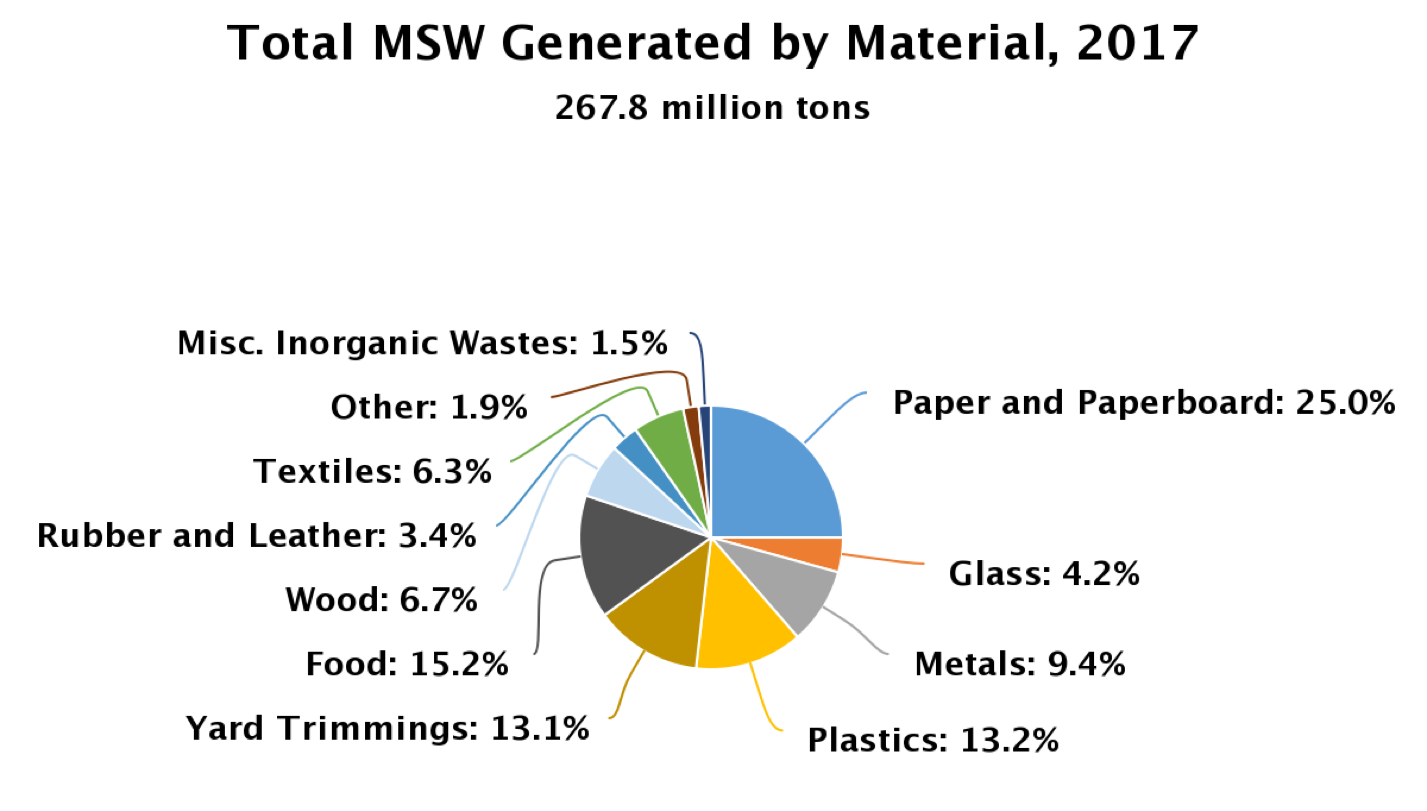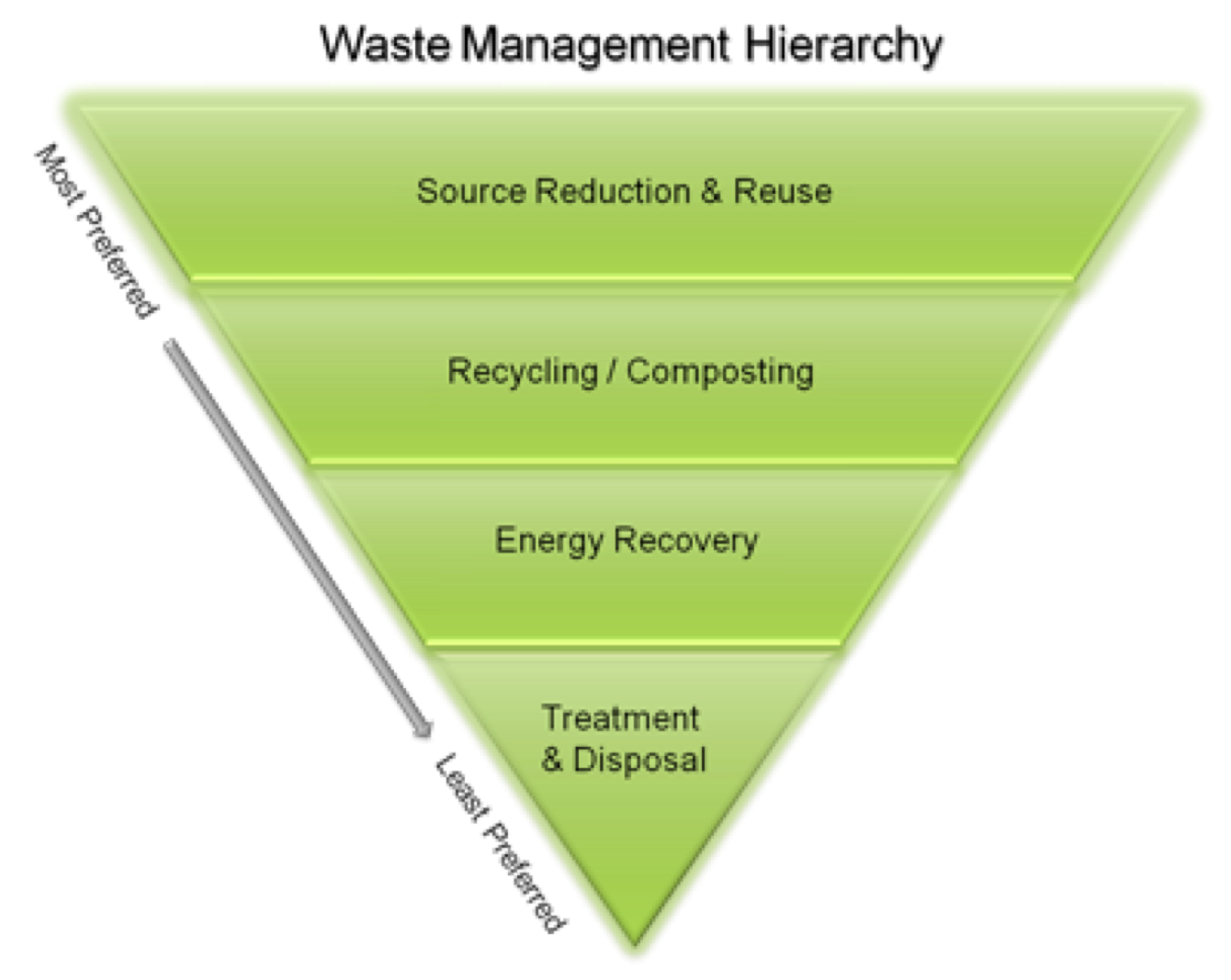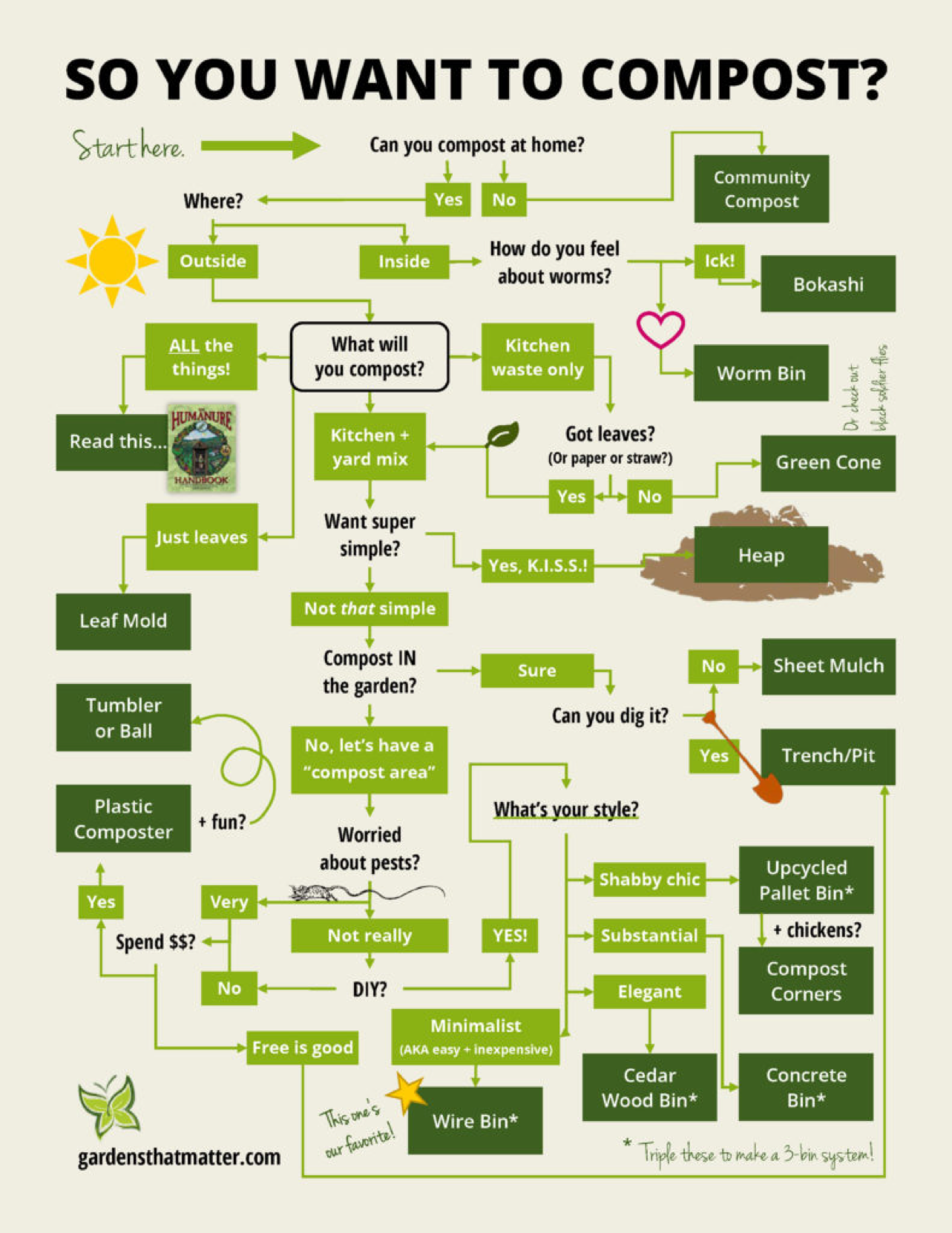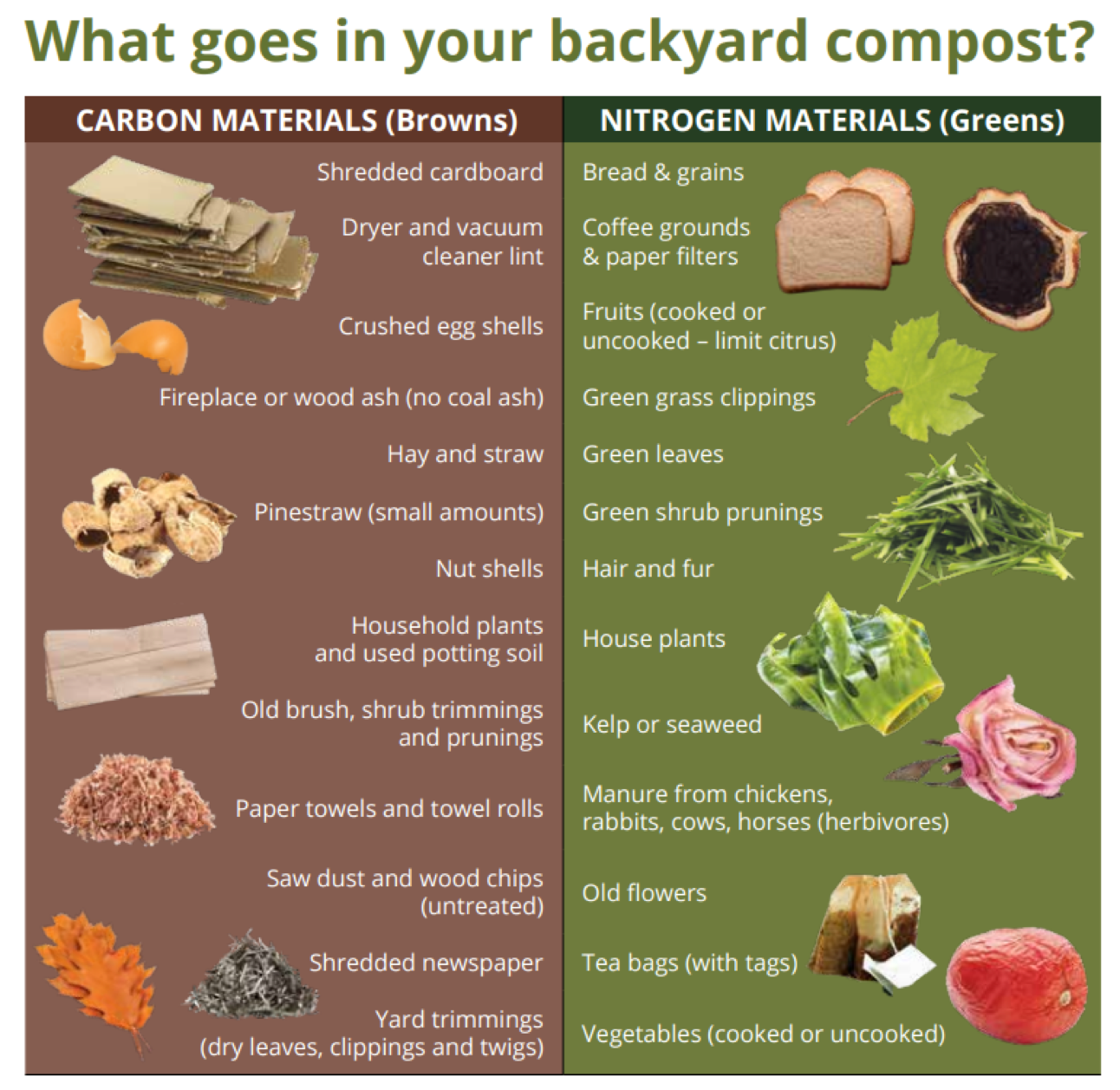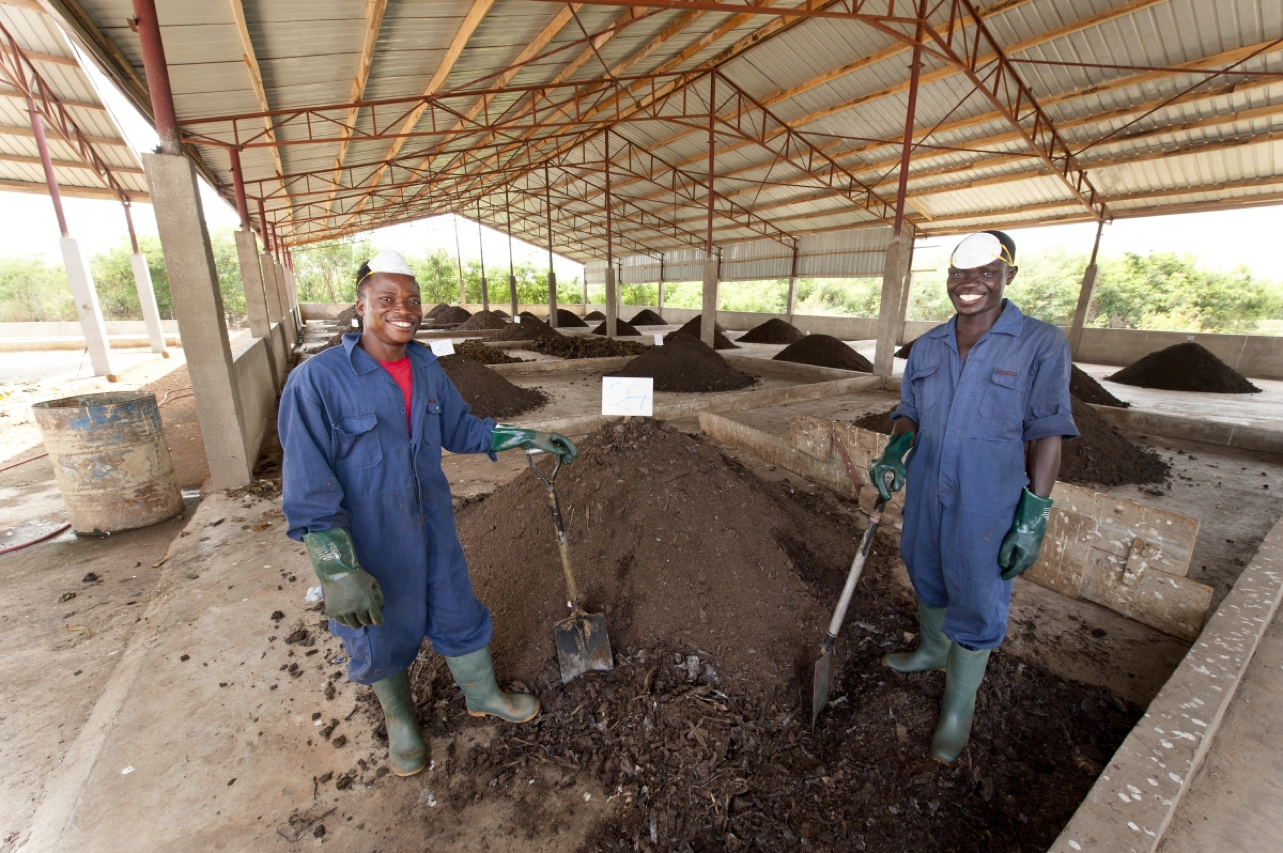In 2017, close to 270 Million tons of municipal waste was generated in the United States, with around 10% of this total municipal waste being composted. While that’s a great start, compare that to ~30% at the very least which COULD have been composted (i.e. yard trimmings and food waste). So... why is composting a good thing? And how exactly can we get started composting at home? This week, we’ll take a crack at answering these questions along with a few others related to composting.
U.S. municipal waste generation by type, as published by the U.S. Environmental Protection Agency
Why Compost?
It’s always best to not generate waste in the first place!
To be clear, composting in and of itself is not THE ideal solution to dealing with waste. For one, you can’t compost all plastic or metal materials, which make up a significant portion of our waste (for a list of generally compostable items, scroll to the end of this article). The BEST solution is to not generate waste in the first place (Reduce, Reuse, Recycle). Well, turns out it’s bit more complicated than that, and a basic diagram (shown adjacent) has been created to help visualize how to best handle waste.
After reducing waste or reusing products, we should consider whether the product can be composted or recycled. If those options don’t work, burn the waste for energy (leave the burning to waste management companies for the sake of your neighbors, please). If none of these work, THEN the waste should be sent to a landfill.
Composting is preferable to burning waste or throwing it in a landfill because it actually creates some useful products. Finished compost can be used as a soil amendment, helping provide necessary nutrients to plants such as nitrogen, humus (different than hummus you eat), and minerals. Using finished compost as opposed to synthetic fertilizers can reduce the amount of excess nutrients washed away by water and can also improve soil structure. If the equipment is available, you can also capture methane gas which is produced as the compost breaks down. The methane gas can then be burned for electricity generation or heating purposes. In a landfill, compostable waste will typically not break down as efficiently and becomes contaminated by whatever else is in the landfill. Burning the compostable waste isn’t as efficient either, since the methane and soil amendment products from compost are more valuable commodities.
How to Get Started Composting
So, composting is a nice tool for waste management, but how can you get started composting? There are plenty of options for anyone interested in getting started, from those living in a studio apartment in the city to those with plenty of yard space. One easy option is to simply collect compostable waste in a separate bin and drop it off at a commercial composting facility. According to a report from BioCycle in 2017, there were a total of 4,713 composting facilities in the United States! See how your own state stacks up in terms of municipal composting…
You can also check out a list of some composting facilities throughout the United States with a special testing certification here: https://www.compostingcouncil.org/page/participants
If you don’t have access to a commercial composting facility or would prefer to compost at home, have no fear! Listed below are some options for various composting methods
Vermicomposting: This is an excellent choice for those that don’t have a yard or wish to compost indoors... if you’re okay with worms. Basically, get a closed bin with small holes in the top for aeration. Add kitchen scraps such as shredded paper products and food (avoiding meat, dairy, citrus, or overly salted foods). Add worms, particularly a type called “red wigglers” that you can actually order online (yes, Amazon.com sells live worms). Keep the bin at a nice moisture and temperature level for the worms, and continue to add kitchen scraps as space in the bin allows.
Bokashi: As an anaerobic composting method, you’ll need an air-tight container for Bokashi composting. This form of composting also requires you to buy a special inoculant that you can get online fairly easily (try searching for “Bokashi bran”). Add kitchen food scraps along with the special inoculant to the bucket, mix it up a bit, and smoosh it down to push any excess air out of the kitchen scraps. Add another small layer of special inoculant, then seal the air-tight bin. This method of composting is actually more of a fermentation as opposed to classic composting, so you’d want to mix the finished Bokashi scraps into some soil and let it sit for a few weeks before applying it as a fertilizer.
Heap Composting: This type of composting can take many forms, such as a wooden bin, a plastic tumbler, or a wire cage around a pile of compostable material. Try to contain the compost loosely in some way and mix it up every week or so to help aerate it. I like to add a little bit of nearby soil into the compost, and I also recommend adding a cover layer of mulch or dead leaves over top in order to keep in moisture and heat (I like to use animal bedding/cedar chips as a nice cover). You’ll want to keep this type of compost a little damp as well.
Trench/Pit Composting: Dig a deep hole (a few feet deep). Throw compostable items into the hole. Cover up the hole with at least 6 inches of soil. That’s basically it. Just make sure you don’t do this on public property or in your neighbor’s yard, and also be aware of potential utility lines where you’re digging.
A helpful infographic produced by Gardens That Matter helps break down some considerations for composting…
One important concept to keep in mind for heap and trench/pit composting is to get a nice ratio of “green” to “brown” material. “Green” (nitrogen) material is generally fruits and vegetables, coffee grounds, green yard waste, etc. “Brown” (carbon) material is generally dead leaves, paper products like newspaper, mulch, etc. You’ll want to aim for a volume ratio of about 1 part “green” material to 3 parts “brown” material for the compost to work well, although this ratio can be adjusted as necessary. Check out the lists below for commonly home-compostable items to help give you an idea for getting started:
Typically, you can also compost meat/animal products, oils, and special compostable plastics (such as Polylactic Acid [PLA]) at commercial composting facilities (not at home) since they can reach higher temperatures under controlled condition, but check with the local facility to make sure they accept these products beforehand.
Composting Around the World
Composting is slowly becoming a more widely-used waste management practice in the United States, but how does this compare to the rest of the world? In Europe, Austria seems to lead the pack in terms of the percentage of municipal waste being composted, which is close to 34% diversion of municipal waste to compost based on estimates within the past few years. Austria has programs that include a separate collection bin and pick-up service for compostable waste (alongside recycling and other trash) as well as regulations and taxes on landfills. The decentralized composting programs encourage more at-home and local composting, and they even proposed a statistic that one additional job is created for every 1,100 tons of separately collected and processed compostable waste.
Outside of Europe, India composts a good bit of their municipal waste, with composting being one of the primary waste management options in the country according to one report published in 2014. Landfilling in India is especially not a preferable option due to a lack of suitable and available land for sites. In Ghana, the city of Accra faces concerns of growing levels of municipal waste, and the JVL Fortifer composting plant (pictured below) established in 2017 through a public-private partnership is helping to address these concerns.
Remember: composting is not THE solution to waste disposal, but it’s a great waste management tool alongside recycling and reusing. Interested in starting your own home compost? Check out some of the links below for some helpful sites around the internet:
To think about...
What do you think are some of the reasons or challenges that prevent compost from being a more widespread waste disposal practice?
How much compostable waste do you produce over the course of an average week compared to waste that is recyclable or goes in the trash?
Can you think of any benefits or disadvantages to composting that are not related to the environment? (e.g. economic, social, or health-related benefits and drawbacks)
Sources:
Goldstein. The State of Organics Recycling in The U.S., 4 October 2017. BioCycle. (https://www.biocycle.net/state-organics-recycling-u-s/)
BASF. These maps show how the world composts, 3 June 2014. Quartz. (https://qz.com/216261/these-maps-show-how-the-world-composts/)
Penhallegon & Pokorny. Here's the scoop on chemical and organic fertilizers, March 2015. Oregon State University Extension Service. (https://extension.oregonstate.edu/news/heres-scoop-chemical-organic-fertilizers)
Antonsen. Week 14: Food in Landfill, 2017. 52 Weeks for Earth. (http://weeksforearth.com/food-in-landfills/)
South Carolina Department of Health and Environmental Control. Composting: Recycling Naturally, 2018. (https://scdhec.gov/environment/recycling-waste-reduction/composting-recycling-naturally)
United States Environmental Protection Agency. Composting At Home, ND. (https://www.epa.gov/recycle/composting-home)
United States Environmental Protection Agency. National Overview: Facts and Figures on Materials, Wastes and Recycling, ND. (https://www.epa.gov/facts-and-figures-about-materials-waste-and-recycling/national-overview-facts-and-figures-materials)
Landers. Infographic: Choosing the Best Compost Method, ND. Gardens That Matter. (https://www.gardensthatmatter.com/infographic-best-compost-method/)
Celia. How to Compost in an Apartment, 15 January 2019. Litterless. (https://www.litterless.com/journal/how-to-compost-in-an-apartment)
Ministerium Fur Ein Lebenswertes Osterreich. The Austrian Example and a Proposal for Europe, 24 June 2015. (https://www.compostnetwork.info/wordpress/wp-content/uploads/Position-of-Austria-on-Biowaste.pdf)
Levitan. Recycling’s “Final Frontier”: The Composting of Food Waste, 8 August 2013. (https://e360.yale.edu/features/recyclings_final_frontier_the_composting_of_food_waste)
Cofie, et al. Composting Experience in Developing Countries: Drivers and constraints for composting development in Ghana, India, Bangladesh and Sri Lanka, December 2014. Solid Waste Management for Local Governments in the Philippines. DOI: 10.13140/RG.2.2.28597.17124
Drechsel & Nikiema. Can you imagine a world of waste-wise cities? Accra leads the way Ghana Article, ND. CGIAR Research Program on Water, Land and Ecosystems. (https://wle.cgiar.org/thrive/2018/10/01/can-you-imagine-world-waste-wise-cities-accra-leads-way)


